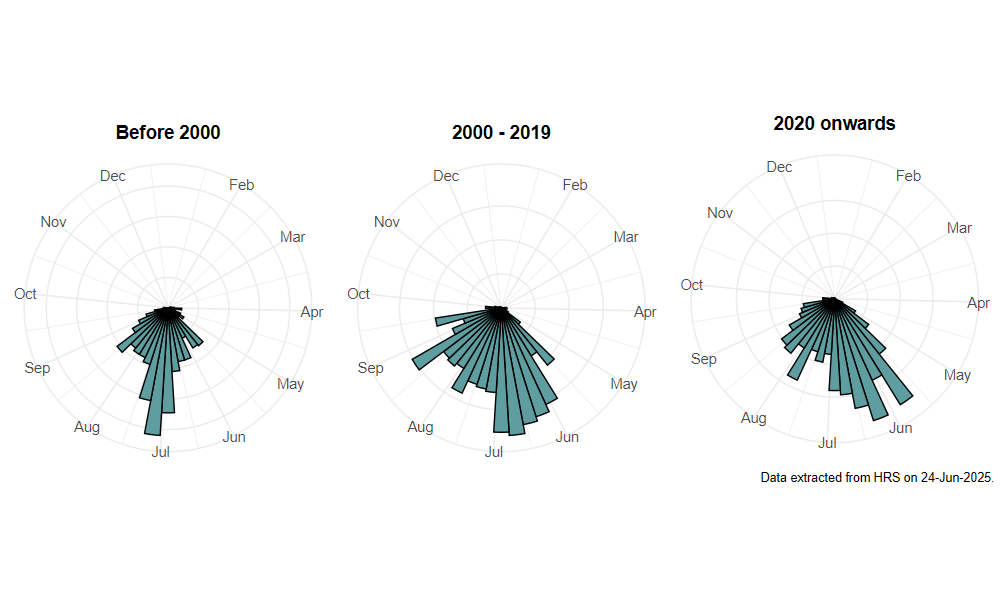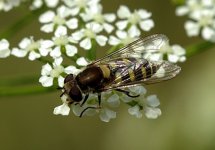Melangyna compositarum (Verrall, 1873)
Identification
Identification difficulty = 3. ![]()
![]() according to Ball & Morris, 20241
according to Ball & Morris, 20241
Biology
The larva is unknown. Adults are associated with coniferous woodlands and plantations where they can be found visiting flowers, especially Hogweed Heracleum sphondylium and Wild Angelica Angelica sylvestris, in rides and glades. Males hover fairly high at the edges of stands of trees.
Flight period
The following plots show the number of unique records per week excluding those reported to be of immature stages.

Distribution
There is considerable confusion between this species and M. labiatarum, and many recorders do not attempt to distinguish between the two. This species is said to be the more northerly of the pair, with most records from Scotland, but scattered records throughout Britain.

Trends
The following plots show the Frescalo TFactor vs year and a map of the rescaled frequency (all records) for the species.
-
Ball, S., & Morris, R. (2024). Hoverflies of Britain and Ireland. WILDGuides (3rd ed.). Oxford: Princeton University Press. ↩
